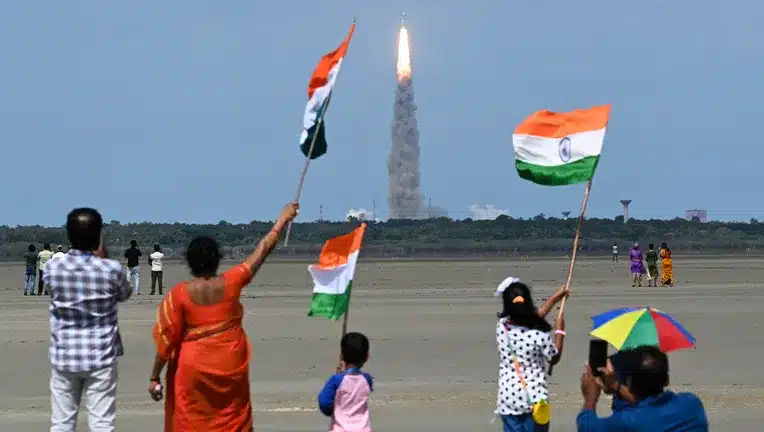
India on Wednesday, August 23, staked a new claim as a national superpower in space after successfully landing a spacecraft on the unexplored south pole of the moon.
A lander with a rover inside touched down on the lunar surface at 6:04 local time, sparking cheers and applause among the space scientists watching in the southern Indian city of Bengaluru.

Chandrayaan-3 mission’s successful soft-landing on the moon has made India the only country to have marked its presence on the lunar South Pole which is considered difficult for its rough and harsh conditions. Scientists believe the uncharted territory could hold vital reserves of frozen water.
The successful moon mission showcases India’s rising standing as a technology and space powerhouse and dovetails with the image of the country that Prime Minister Narendra Modi is trying to project: an ascendant country asserting its place among the global elite.
The lunar rover will slide down a flap from the lander within hours or a day and conduct experiments, including an analysis of the mineral composition of the lunar surface, said S. Somnath, chairman of the state-run Indian Space Research Organization.

Somnath said the mission is expected to last two weeks, and that India would next attempt a manned lunar mission.
India is the fourth country to land on the moon, and the first to land on one of the moon’s lunar poles. Russia (then the Soviet Union), the U.S. and China had landed spacecrafts successfully on the moon years back.
India previously attempted a lunar south pole landing in September 2019, but a software failure caused the Chandrayaan-2 mission to crash into the surface.
Days before Chandrayaan-3′s landing, Russia attempted to land its first spacecraft on the moon in almost 50 years. But the Luna-25 mission smashed into the lunar surface on Saturday, August 19, with Russian space agency Roscosmos confirming the spacecraft spun of control.

Leave a Reply